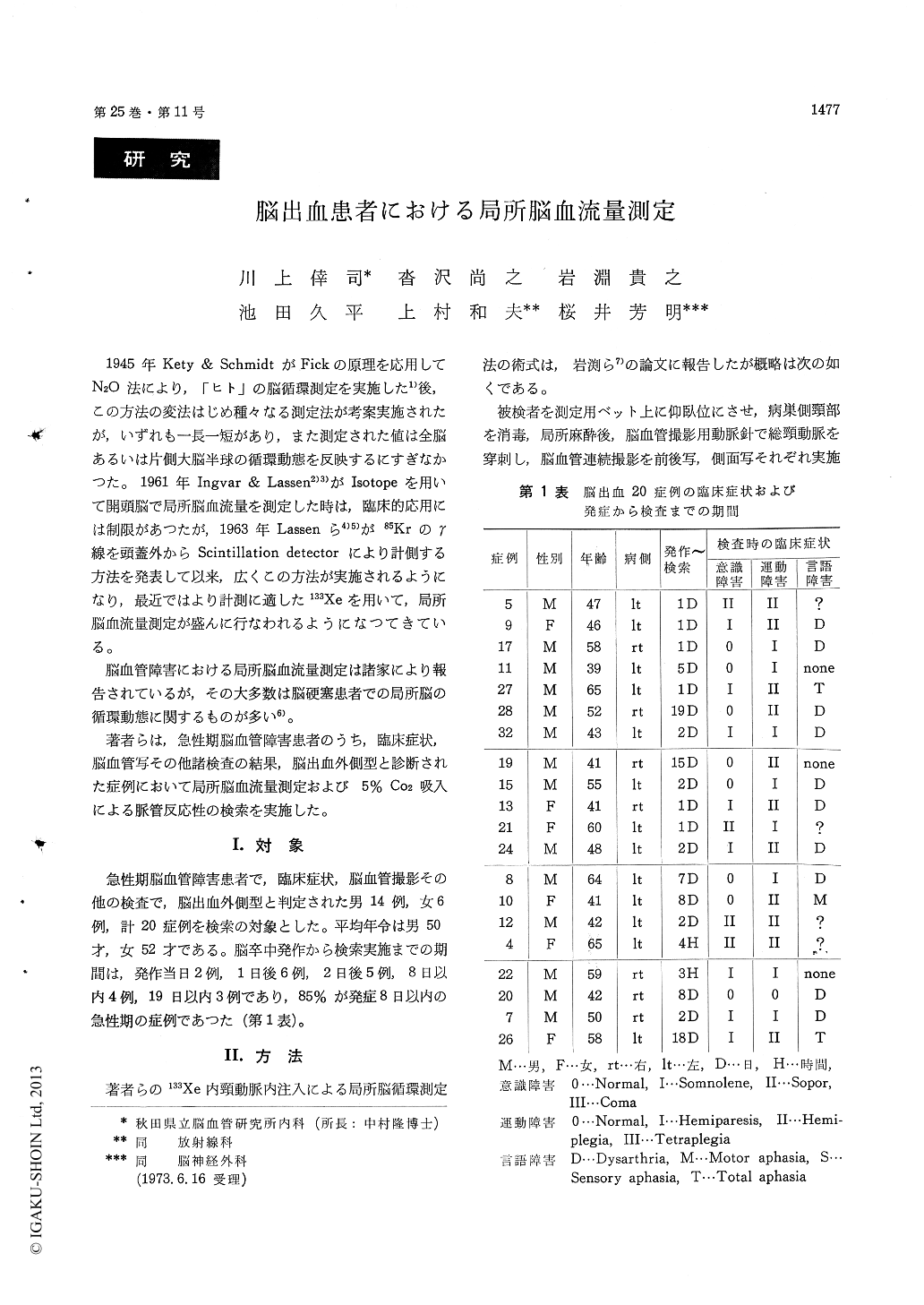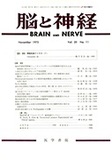Japanese
English
- 有料閲覧
- Abstract 文献概要
- 1ページ目 Look Inside
1945年Kety & SchmidtがFickの原理を応用してN20法により,「ヒト」の脳循環測定を実施した1)後,この方法の変法はじめ種々なる測定法が考案実施されたが,いずれも一長一短があり,また測定された値は全脳あるいは片側大脳半球の循環動態を反映するにすぎなかつた。1961年lngvar & Lassen2)3)がlsotopeを用いて開頭脳で局所脳血流量を測定した時は,臨床的応用には制限があつたが,1963年Lassenら4)5)が85Krのγ線を頭蓋外からScintillation detectorにより計側する方法を発表して以来,広くこの方法が実施されるようになり,最近ではより計測に適した133Xeを用いて,局所脳血流量測定が盛んに行なわれるようになつてきている。
脳血管障害における局所脳血流量測定は諸家により報告されているが,その大多数は脳硬塞患者での局所脳の循環動態に関するものが多い6)。
Regional cerebral blood flow (rCBF) in 6 regions was measured in 20 patients with cerebral hemor-rhage (lateral type) by 1333Xe clearance method and 5% CO2 inhalation test was performed by initial slope analysis. Area 2 and 4 are thought to be nearest to the hematoma and to show the changes induced by the damage of cerebral hemorrhage. Values for rCBF were calculated by digital com-puter (JEC-7). According to the location of ab-normal foci, 20 patients could be divided into the following.
Type I: 7 cases, generalized ischemic type.
Type II: 5 cases, focal hyperemic type.
Type III: 4 cases, focal ischemic type.
Type IV : 4 cases, other channel except area 2 and 4 shows abnormal foci.
One case with severe clinical symptome in Type I Shows no rCBF change by 5% CO2 inhalation and most of cases with mild clinical signs makes good response to hypercapnia. Two of five cases in Type II do not show increasing of rCBF by CO2 inhalation and one of them show so-called "in-tracerebral steal syndrome".
rCBF change observed in Type III and IV is similar to Type I except for one case.
Early venous filling or capillary blush cannot be observed in cases with focal hyperemic region angiographically.

Copyright © 1973, Igaku-Shoin Ltd. All rights reserved.


